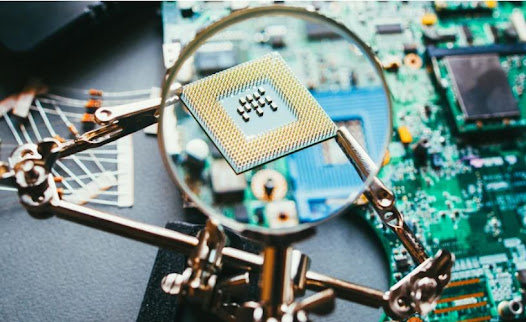Understanding PCB Surface Finishes: ENIG vs. ENEPIG
ENIG, is a two-layer metallic coating consisting of an electroless nickel layer capped with a thin layer of immersion gold, which protects the nickel from oxidation.
ENEPIG, on the other hand, features three layers: an electroless nickel layer, followed by a palladium layer, and finally a thin gold layer. The addition of palladium provides a robust barrier between the nickel and gold layers, enhancing the durability and longevity of the finish.
Pros and Cons of ENIG vs. ENEPIG Surface Finishes
The Pros of ENIG:
- Uniform Finish: ENIG provides a smooth and flat surface that is ideal for fine-pitch components, helping in avoiding solder bridging.
- Good Oxidation Resistance: The gold layer protects the nickel from oxidation, ensuring excellent shelf life.
- RoHS Compliance: ENIG is lead-free and compliant with RoHS regulations, which is essential for electronics intended for the European market.
The Cons of ENIG:
- Black Pad Issue: One potential risk with ENIG is the black pad phenomenon, where the nickel-phosphorous layer can become brittle and lead to poor solder joints.
- Cost: ENIG can be more expensive than other finishes due to the use of gold.
The Pros of ENEPIG:
- Versatile for Multiple Assembly Processes: ENEPIG is suitable for soldering, wire bonding (gold and aluminum), and conductive adhesive bonding, making it incredibly versatile.
- Eliminates Black Pad Issues: The palladium layer prevents the oxidation of nickel, thereby eliminating the black pad problem associated with ENIG.
- Long Shelf Life: The robust three-layer protection offers a superior shelf life, crucial for components that may not be immediately used.
The Cons of ENEPIG:
- Higher Costs: The additional palladium layer increases the cost compared to ENIG.
- Complexity in Processing: The triple-layer process is more complex to manage, requiring precise control during manufacturing.
When to Use ENEPIG Over ENIG?
ENEPIG is recommended in situations where multiple assembly processes are anticipated for the same PCB or where maximum reliability is required under harsh conditions. It is particularly advantageous in high-reliability fields such as aerospace and medical devices. In contrast, ENIG might be sufficient for less demanding applications but where a flat surface is critical, such as in high-density component assemblies.
Applications in Specific Critical Industries
Aerospace PCBs: ENEPIG is often preferred due to its excellent performance in harsh environments and its ability to support various types of component bonding.
Medical PCBs: The high reliability and non-toxic nature of ENEPIG make it suitable for medical devices, especially those requiring long-term reliability in body or close to body applications.
Automotive PCBs: While ENIG can suffice for general applications, ENEPIG may be chosen for high-reliability needs or where multiple assembly techniques are used.
Challenges and Manufacturing Considerations
The capability to process ENEPIG is not universally available in all PCB manufacturing facilities due to the complex nature of the process and the cost of the materials involved, particularly palladium. Manufacturers need to maintain a highly controlled environment to ensure the quality and consistency of the ENEPIG finish. For projects requiring high reliability, selecting a high quality pcb manufacturer with the capability to provide high-quality ENEPIG finishes is crucial. This often involves evaluating their process controls, quality assurance practices, and the overall reliability of their PCBs.
In conclusion, the choice between ENIG and ENEPIG should be guided by the specific requirements of the application, including the expected environmental conditions, the assembly processes involved, and the need for long-term reliability. Understanding the advantages and limitations of each can help designers make informed decisions that align with the technical requirements and budgetary constraints of their projects.








